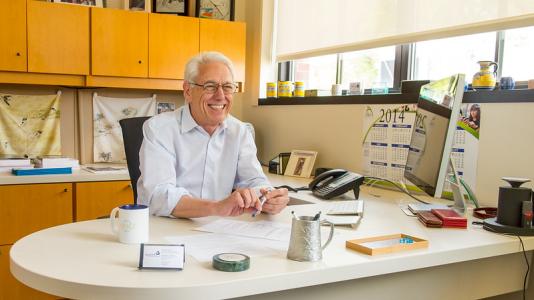
As I’ve noted in previous ACCESS newsletters, the last decade has truly been an amazing time for storage and decarbonization The 2000s gave us the first glimpse of what an electrified transportation future could look like, with the advent of the Nissan Leaf and the Tesla Roadster. Those were also the days of the stationary storage demonstration projects, spurred by the rapidly falling cost of solar photovoltaics and the ensuing sense that distributed generation and storage could become an essential requirement. This was the time of the stimulus package that lead to various battery factories being stood up and the Greentech boom that followed.
But as the decade came to a close, the lack of demand for electric cars and the slow pace of renewable adoption led to a reckoning: the cost and performance of storage was not enough to replace fossil fuels.
We still needed dramatic changes, ones that required new innovations in the labs. These changes needed to rapidly accelerate production and manufacturing at a scale that could rival fossil fuel production. This was the challenge the world faced at the start of the last decade.
This coincided with the start of a new modality of funding from the U.S. Department of Energy, called “energy innovation hubs.” In the words of former Secretary of Energy and Nobel Prize winner Steven Chu, the Hubs were “…large, mission-oriented research efforts such as the Manhattan Project or the type of research at AT&T’s Bell Laboratories that gave us the transistor.” The phase that came to signify this modality was “end-to-end integration,” where basic scientists were expected to work closely with mission-oriented technologists to pull the thread on new scientific discoveries to determine how to create products with compelling technological impact.
The Hubs were unique in many ways: the funding amount, the scope of the effort, the number of people involved, and the diversity of talent. But more than any of these aspects, the Hubs were expected to be mission-oriented, where each person was working in concert with others, all to the tune of a conductor who would take this immense talent in the scientific community and create a symphony. The success of the Hubs depended on the conductor.
[George Crabtree] assembled a team of world-class talent from various disciplines, uniting them under a shared vision and orchestrating the harmonious symphony that became JCESR. — Venkat Srinivasan, director of ACCESS and JCESR
This unique model for science has given us Hubs dedicated to synthesizing liquid fuels from solar energy, improving the efficiency of buildings, simulating nuclear reactors, discovering new energy storage technologies, developing resiliency for critical materials, and advancing desalination technologies.
The Hub on batteries was established in December 2012 and became known as the Joint Center for Energy Storage Research, or JCESR. It focused on beyond lithium-ion batteries and examined compelling new chemistries such as redox-active organics, multivalent ions, solid-state batteries, lithium-sulfur batteries, and more.
I will dedicate a future note to the impact of JCESR to energy storage science and technology, but this Director’s Message is dedicated to its conductor: George Crabtree.
George was a distinguished scientist at Argonne with a long history of outstanding research in superconductors. He was new to energy storage when he took the leadership helm of JCESR but, within a few short months, was conversing with battery scientists as one of their own. He assembled a team of world-class talent from various disciplines, uniting them under a shared vision and orchestrating the harmonious symphony that became JCESR. As he often liked to say, JCESR aims to “make the whole greater than the sum of its parts” and that only happened because of George.
George passed away on January 23, 2023. His death was sudden—he was fully immersed in science and operating at his usual hectic pace hours before his passing. Over the last few months, I’ve heard the full spectrum of adjectives to describe George: inspirational leader, towering personality, amazing scientist, stimulating public speaker, pillar of the community, champion of science, mentor, amazing human. He was all these things and more.
It was with a heavy heart that we said goodbye to George, our dear friend. While the energy storage world charges on inexorably towards a decarbonized world, let’s take a moment to acknowledge George’s role in advancing the nation’s vision for a clean and secure energy future.
Argonne National Laboratory seeks solutions to pressing national problems in science and technology. The nation’s first national laboratory, Argonne conducts leading-edge basic and applied scientific research in virtually every scientific discipline. Argonne researchers work closely with researchers from hundreds of companies, universities, and federal, state and municipal agencies to help them solve their specific problems, advance America’s scientific leadership and prepare the nation for a better future. With employees from more than 60 nations, Argonne is managed by UChicago Argonne, LLC for the U.S. Department of Energy’s Office of Science.
The U.S. Department of Energy’s Office of Science is the single largest supporter of basic research in the physical sciences in the United States and is working to address some of the most pressing challenges of our time. For more information, visit https://energy.gov/science.